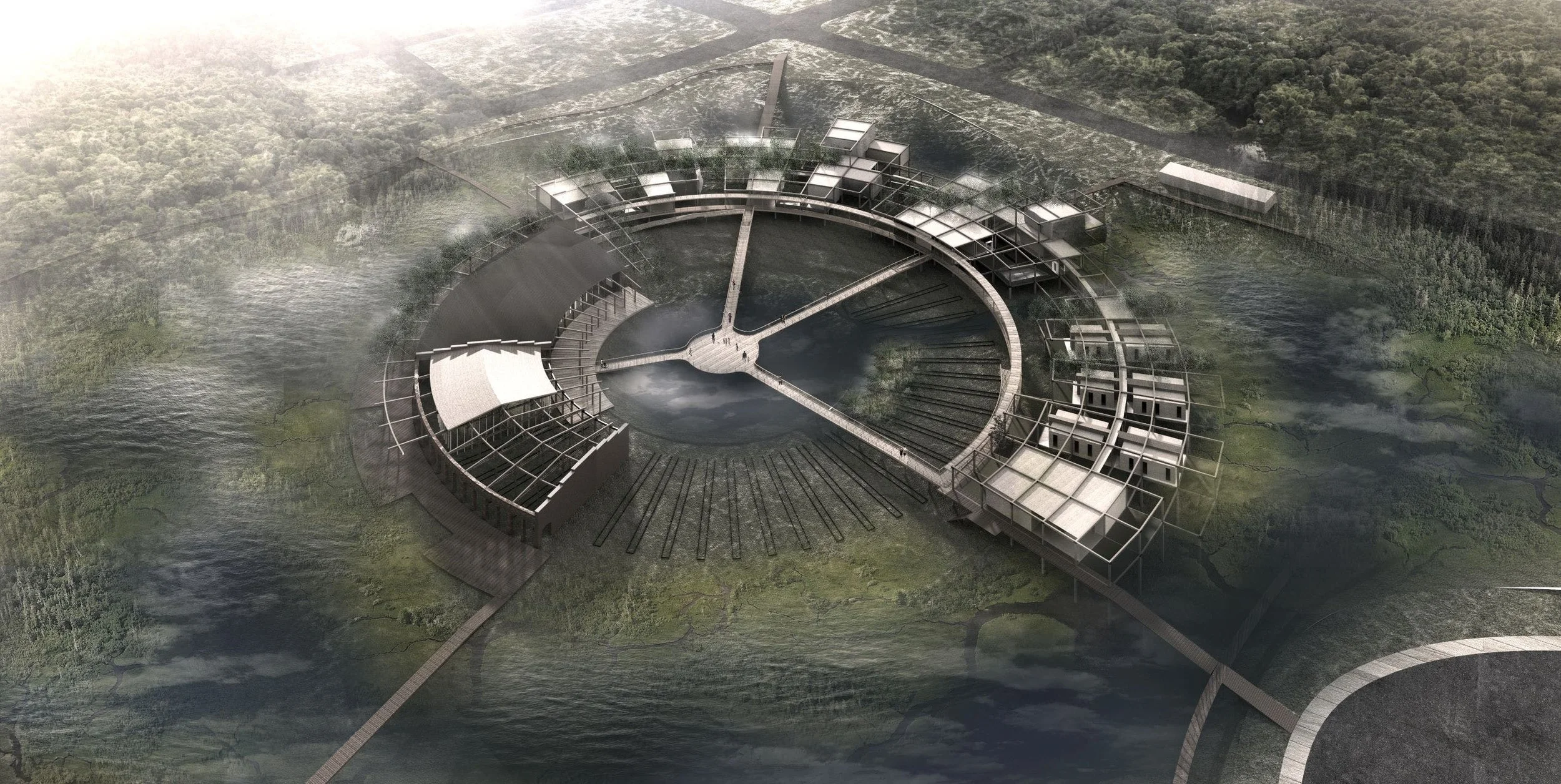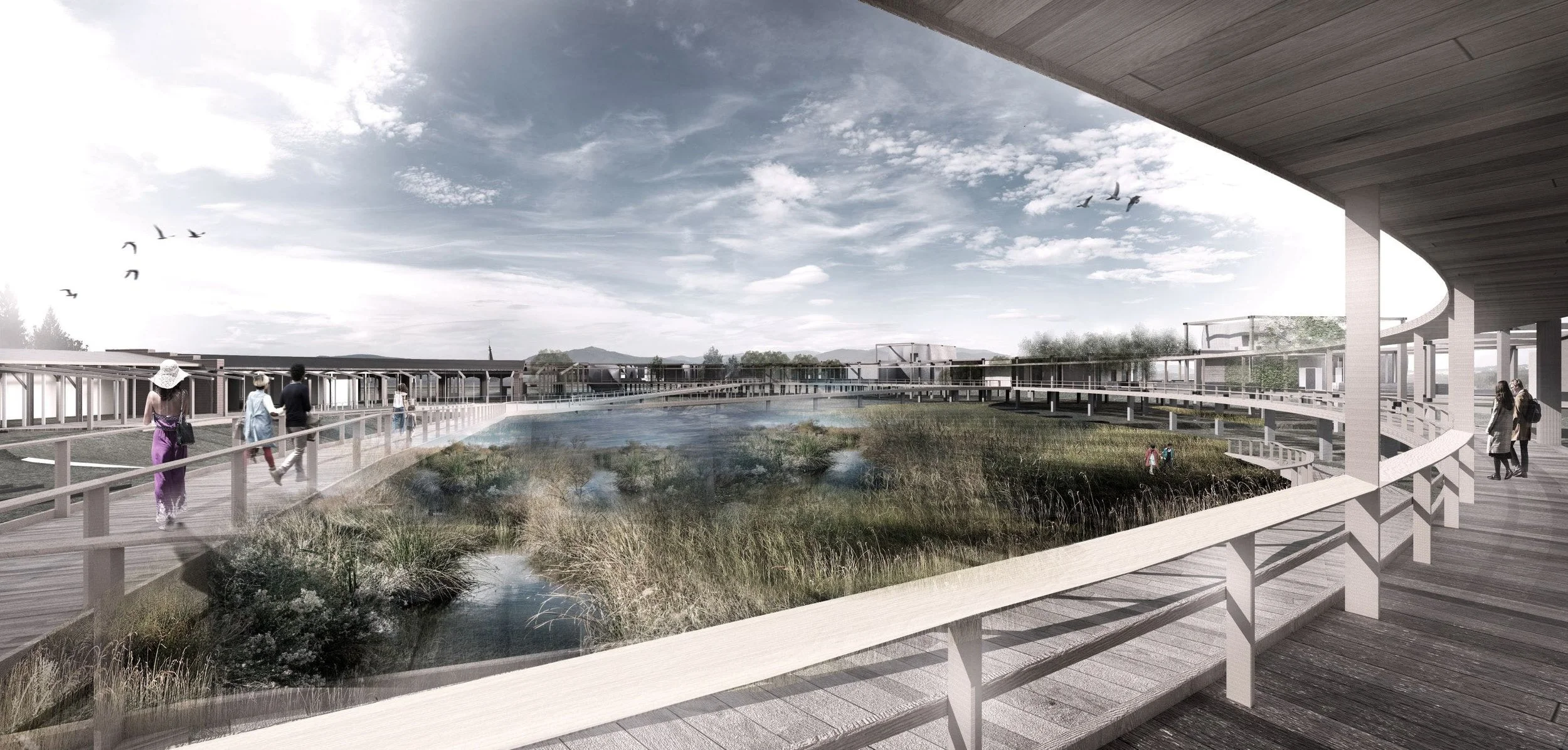An Architectural Ecology of Symbiosis
Originally posted on Archinect: https://archinect.com/m.p./project/an-architectural-ecology-of-symbiosis#.YE6DMd2g6lk.linkedin
Nature always seeks to achieve a state of equilibrium—and now human’s continued dominance and exploitation of the planet’s resources are disrupting the balance of ecological systems around the world.
‘An Architectural Ecology of Symbiosis’ responds to the growing correlation between anthropogenic climate change, human health, and ecological health— by attempting to remedy architecture’s contribution to this relationship. This thesis explores the potential for a symbiotic coexistence between nature and man.
Identifying the imbalanced state of ecological systems today, research has shown that human’s impact on Earth’s ecologies is now consequently impacting human health. A growing body of evidence is demonstrating that the industry of architecture (and notably healthcare architecture) is negatively contributing to anthropogenic climate change- and thus the well-being of humans as well as other living beings.
The way in which the modern economy operates within a linear system (where resource becomes waste) is at odds with circular systems that occur intrinsically within nature (where waste becomes resource). Driven by the need to address the growing urgency of the climate crisis, a radical shift in thinking must be made in order for the adaptation and resiliency of communities all around the world. This thesis proposes that the built environment and ecological systems should no longer be conceived of as separate entities, but rather that a symbiosis can be achieved between the natural environment, the built environment, and its human occupants.
This notion of symbiosis arises from observing mutualistic relationships that occur within natural ecosystems. Microbes, plants, and animals have practiced this reciprocity within natural ecosystems for millenia, and scientists are only beginning to uncover how the success of ecosystems depend on these mutualistic, cooperative relationships that occur across all scales of life.
Recent studies are also demonstrating that humans benefit from the intrinsic healing and restorative properties of nature- one such emerging concept is called ‘Biophilia’. By exposure to natural elements (such as walking through a forest, or even viewing images of natural landscapes) an individual’s blood pressure lowers and oxytocin levels are increased- among a much more extensive list.
From this understanding, a fundamental question arises: If Nature can ‘heal’ humans while architecture ‘helps’ humans, can architecture ‘help’ Nature while Nature ‘heals’ humans? This creates the vision of a regenerative circle- a circular system that mirrors a circular, closed-ended biological system in which nature has operated within for millennia; a system where nutrient becomes waste, and waste becomes nutrient. Translating the ‘linear’ operation of today’s economy into that of a ‘circular’ closed-ended loop of symbiosis, the site becomes a testing grounds in which the built environment seeks to instate a symbiotic coexistence with nature; one where the built environment acts as a medium in which both human and planetary health is remediated simultaneously.
Identifying a site that bears the scars of anthropogenic activity, the intervention sits at an abandoned railyard south of San Francisco, in dire need of restoration and decontamination. Historically, San Francisco Bay was a thriving estuary full of biodiversity, but by 1961, 90% of the Bay’s wetlands had disappeared. Acknowledging the Bay’s former state, this intervention reclaims its rich ecological history by reinstating the wetlands, inviting future biodiversity while adding further resiliency to the site.
A timber ‘space frame’ is then set above a newly reinstated 'ecological wetland park', catering to a modular research facility for ecological health and human health, as well as an emergency climate health clinic. This ‘augmented ecology’ of wetland and research facility becomes the platform for which biological systems and human occupants operate in symbiosis- whilst ‘letting Nature be’.
There is a greater need now more than ever to consider a new kind of architectural system that integrates the kinds of symbiotic relationships that pre-exist in nature. We should attempt, as MIT Mediated Matter Group states, to “apply the intrinsic intelligence of natural ecologies to the way we design and fabricate the built environment.” This proposal explores the integration of biological systems within the building envelope or through spatial organization. It presents the possibility of how biological niches could become a part of the technological ecosystem. By dissolving the border between natural ecosystems and artificial ecosystems, could humanity re-establish a state of equilibrium in the natural world? Or by doing so, is a new form of ecosystem introduced?
The imbalance of geological systems is demonstrating that the built environment and ecological systems should no longer be conceived of as separated entities. Rather, it presents the opportunity to integrate the intrinsic intelligence of natural ecologies directly within the built environment. As a result, it allows for a circular growth and development that may simultaneously benefit both humans and natural ecosystems- ultimately seeking to reinstate a symbiotic coexistence with Nature.




